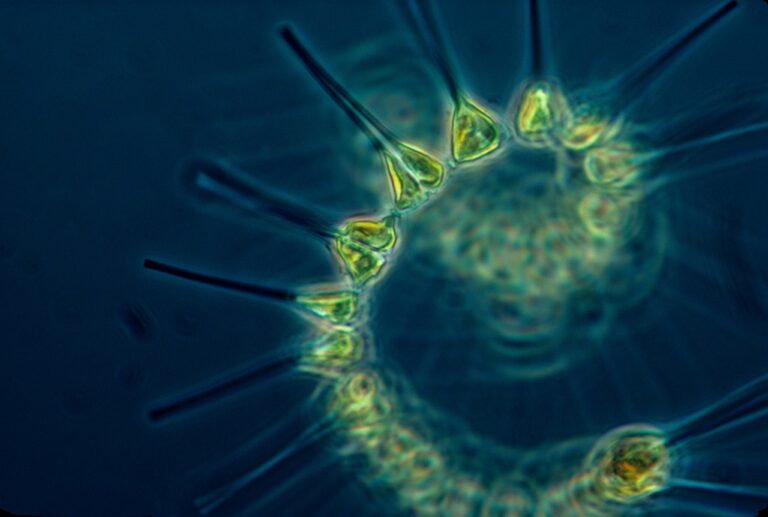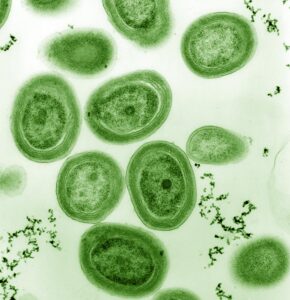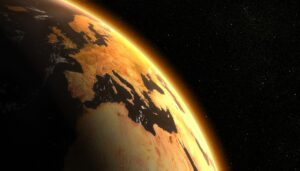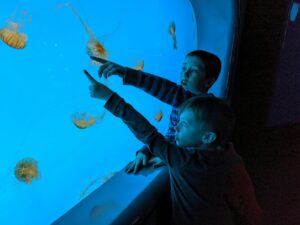What the World’s Smallest Microbe Can Tell Us
What if the most important life form in the ocean was something you’ve never seen? Not a whale, or a dolphin, or a coral reef, but something a million times smaller. It’s called Prochlorococcus, a single-celled microbe that is so numerous that it accounts for an estimated 5% of the world’s total photosynthesis. Think of it as the invisible rainforest of the sea, quietly generating oxygen for the planet and fueling the marine food web from the bottom up.
For decades, scientists assumed that this resilient microbe would thrive as ocean temperatures warmed. But a groundbreaking new study, published this week in the journal Nature Microbiology, has shattered that assumption, revealing that this tiny giant is nearing its breaking point.
The Tiny Titan of the Sea
Prochlorococcus is a photosynthetic picoplankton and the most abundant photosynthesizer on earth. Just a single teaspoon of water can host millions of them. Prochlorococcus and other phytoplankton are responsible for generating a majority of the planet’s oxygen; even more than rainforests like the Amazon. According to Rogier Braakman, a scientist at MIT’s Earth, Atmospheric, and Planetary Sciences Department, “If Prochlorococcus and other photosynthetic organisms had not colonized the ocean, we would be looking at a very different planet.”
A Shocking Scientific Discovery
Scientists previously were under the assumption that prochlorococcus would remain hearty, durable and plentiful as ocean temperatures rise. However, a new study published by a team of scientists from the University of Washington, UC Davis and MIT, has challenged this assumption. While prochlorococcus’s cell division rate exponentially increases at temperatures up to ~28º Celsius (82.4º Fahrenheit), its numbers sharply decline when that temperature is exceeded.
According to NASA, 90% of global warming is occurring in our oceans, and according to UNESCO, the rate of ocean warming over the last 20 years has doubled. This does not paint a promising picture for our friend prochlorococcus. The tropical waters that this picoplankton has thrived in now exceed 30º C (86º F) in some parts; like the western Pacific Ocean. This burnout temperature could cause tropical ocean populations to drop by over 50% over the next 75 years if nothing is done to mitigate rising temperatures. There is a possibility that the ocean’s invisible rainforest could evolve and adapt to rising temperatures, but 75 years is a short time for that to happen.
The Domino Effect on the Ocean’s Food Web
A 50% decline in Prochlorococcus’s population would have massive ripple effects, particularly for the food chain in the ecosystems it inhabits. There is no other phytoplankton that serves the same functional niche in these ecosystems, so the grazers that feed on it—and the predators that feed on those grazers—could suffer massive population declines themselves. While other species may try to fill in these gaps, the composition of this invisible rainforest of the sea will fundamentally change, and scientists are unable to predict what sort of effects this will have.
This is not to mention that a decrease in marine photosynthesizers also impacts the planet’s ability to absorb carbon dioxide—accelerating global warming, creating drought conditions on land, and affecting human food supplies. Phytoplankton is essential to human survival, and while other microbes, like Synechococcus, may be able to take Prochlorococcus’s place in these ecosystems, scientists are still unsure of the ramifications.
What The Becky Valentine Foundation is Doing to Help
At The Becky Valentine Foundation, we see discoveries like this as a powerful reminder of why education, research, and conservation must work hand in hand. Protecting something as small as Prochlorococcus requires us to think big, support bold ideas, and nurture the next generation of scientists who will carry this work forward.
That is why we proudly support programs like the Rosenstiel School’s teaching assistantship, which allows PhD students to mentor undergraduates while advancing cutting-edge marine science. It is also why we fund scholarships at Kettering University, where tomorrow’s engineers and innovators are tackling real-world challenges like renewable energy, mobility, and sustainability. These efforts equip students with the knowledge, curiosity and resilience needed to safeguard the future of our planet.
We are equally proud to back the Wildlife Conservation Society, whose teams work tirelessly on the ground to protect fragile ecosystems, conserve biodiversity, and ensure that wildlife continues to thrive in balance with human needs. Their research and fieldwork provide critical data that informs global policy and strengthens conservation efforts everywhere.
And we are just getting started. Soon, we look forward to sharing news of new partnerships with some of the world’s leading voices in ocean and climate research. Together with partners like these, we are building a coalition of knowledge and action. When education and science are empowered, even the smallest microbe can inspire solutions that change the world.
Every action matters, and you can be part of the solution. Support the Becky Valentine Foundation by contributing to our programs, sharing our mission with others, or inspiring young scientists to explore the wonders of the ocean and the power of STEM. Together, we can protect the ocean’s invisible rainforest, safeguard entire ecosystems, and create a future where people and the planet thrive side by side.





